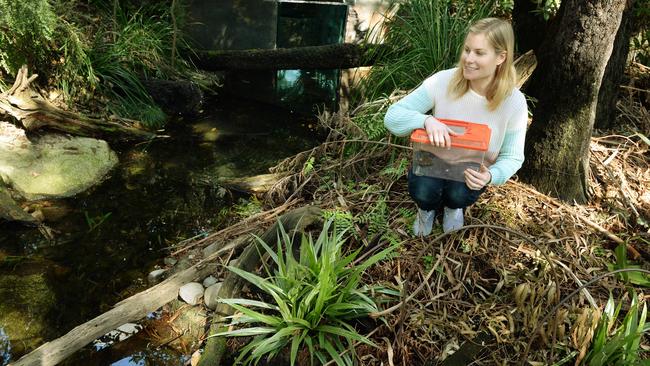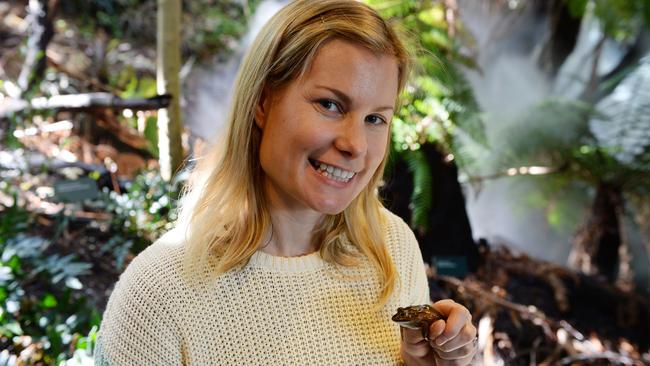Growling grass frogs threatened by development in Cardinia Shire
THIS species was once so abundant it was used to feed snakes at zoos but now housing development is pushing it to extinction.

South East
Don't miss out on the headlines from South East . Followed categories will be added to My News.
SCIENTISTS have called on councils to maintain their wetlands in a bid to save the state’s ailing growling grass frog population.
Claire Keely, a PhD student at the University of Melbourne and Museum Victoria, has been studying the Cardinia-based population of the growling grass frog, a species once so abundant it was used for university dissections and to feed snakes at the zoo.
The frog is now listed as vulnerable to extinction.
Ms Keely’s paper about the frogs’ genetic diversity was recently published in the London Open Science Journal.
She said if the frogs’ habitat was allowed to go to ruin it would have immediate ‘big picture’ effects on local ecosystems because it would affect the populations of animals that ate the frogs and the insects that comprised the frogs’ diet.

“Housing development is a really big problem for frogs — also disease and drought,” she said.
“I think especially around the Cardinia area I found a lot of frogs in farm dams so (there is a need to) maintain those dams ... also maintaining parks and a lot of the green areas because frogs are found in waterways and streams.
“If we can try to maintain their habitat that would help (but) that’s something communities do want anyway; we want to live in places where there is green parkland and lakes because it’s really important to health and wellbeing.”
However Ms Keely said there was some good news; the Cardinia frog population had showed a greater amount of genetic diversity than other Melbourne populations, suggesting it may be in a better position to withstand environmental pressure.
Ms Keely and her team was looking for funding to extend its study into the Gippsland region to find out more about the frog species’ genetic diversity and how the Cardinia populations are related to other populations.
